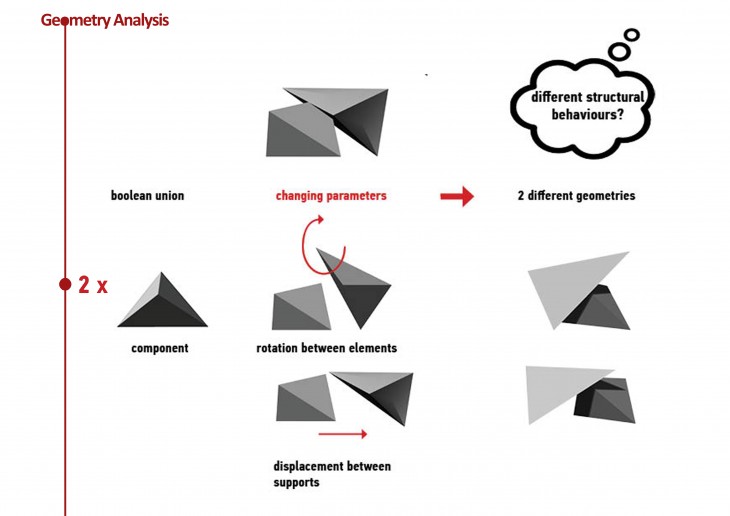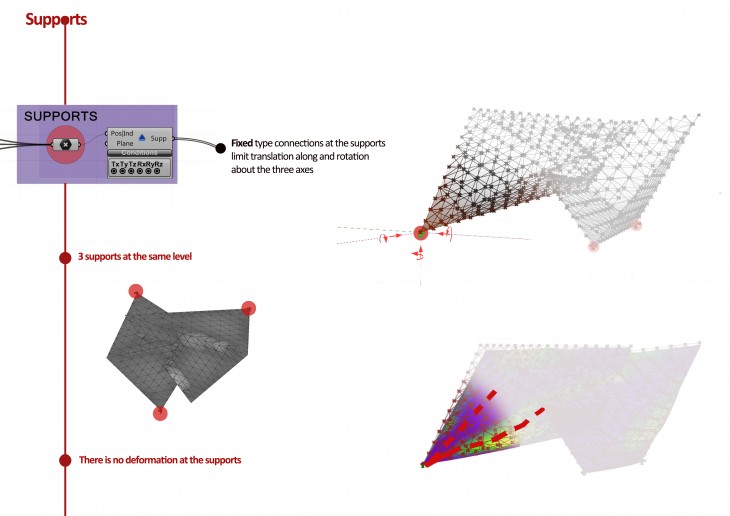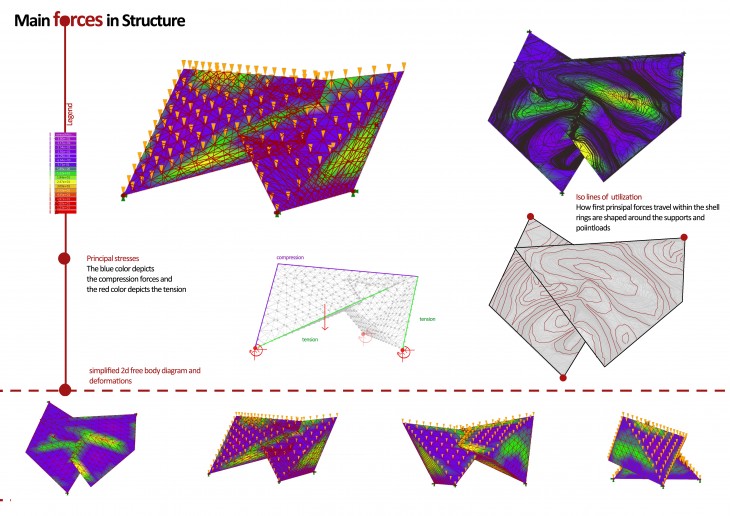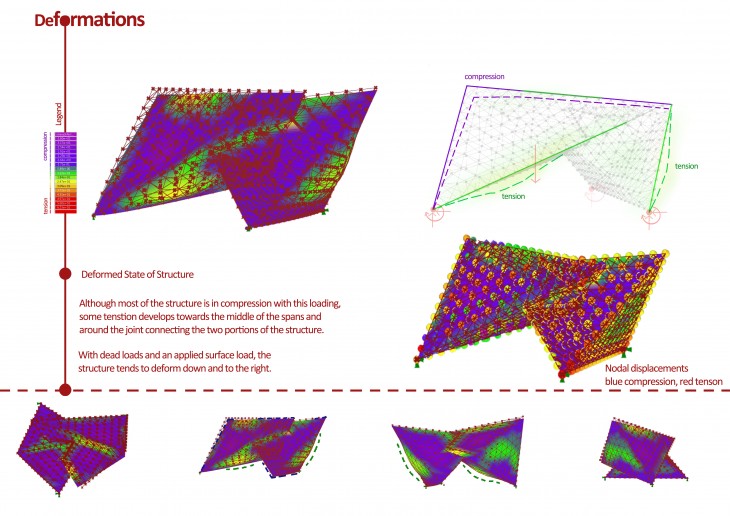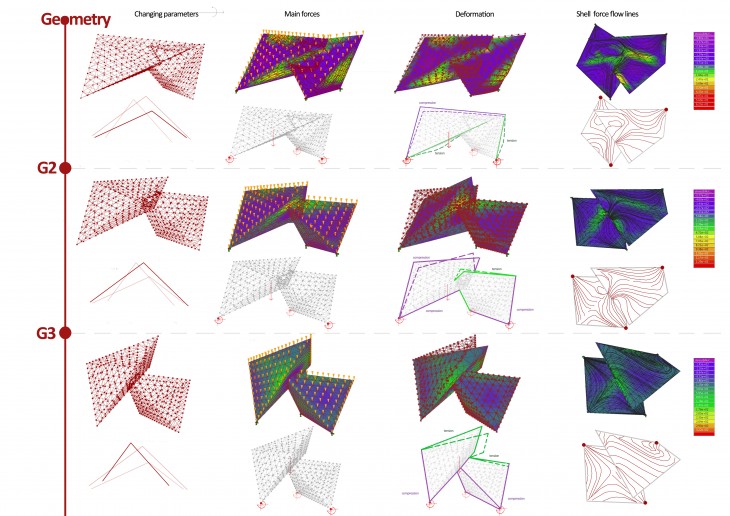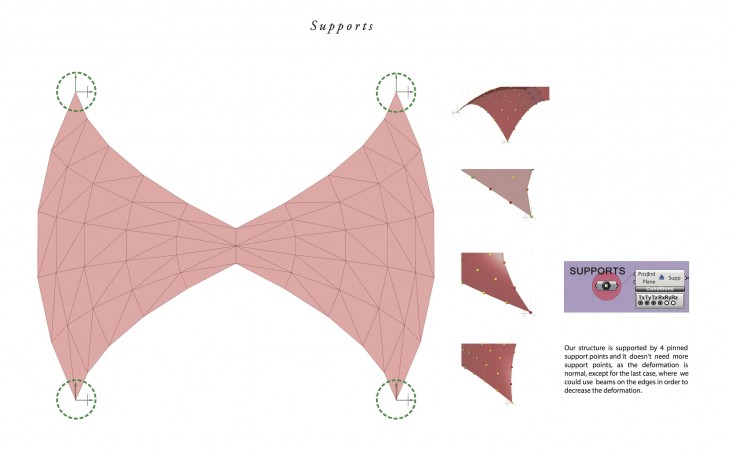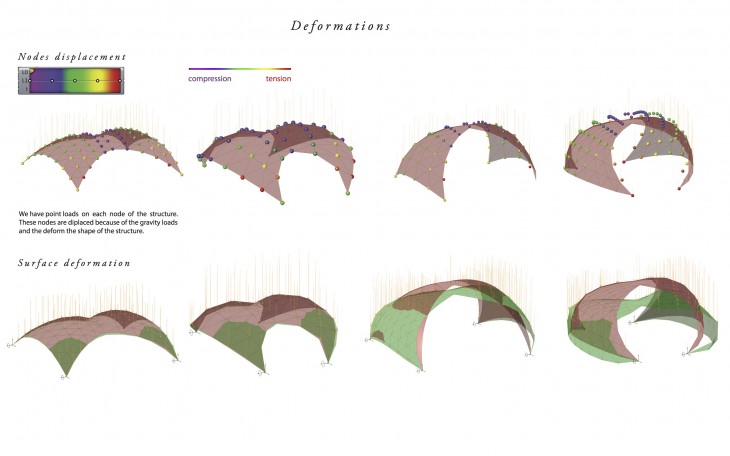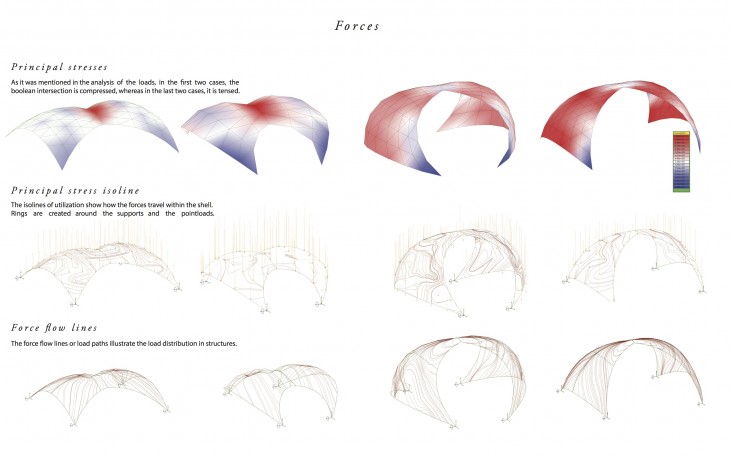Three geometries were examined. In the first, three supports were selected and limited to zero degrees of freedom (fixed supports) while the mass of the structure and an applied load of at the surface was considered. For the second and third geometry, the orientation of the two masses and their junction was changed yielding different stresses and deformations.
Based on the diagrams produced, of the three geometries, the third is the most unstable. This is due mostly to the smaller common surface area between the two masses of the structure. The first and second geometries area more structurally sound as they result in smaller displacements under the same loading. Of the first two geometries, the first geometry is more stable and results in smaller displacements because of a more robust junction of the two masses of the structure.
SECOND CASE

